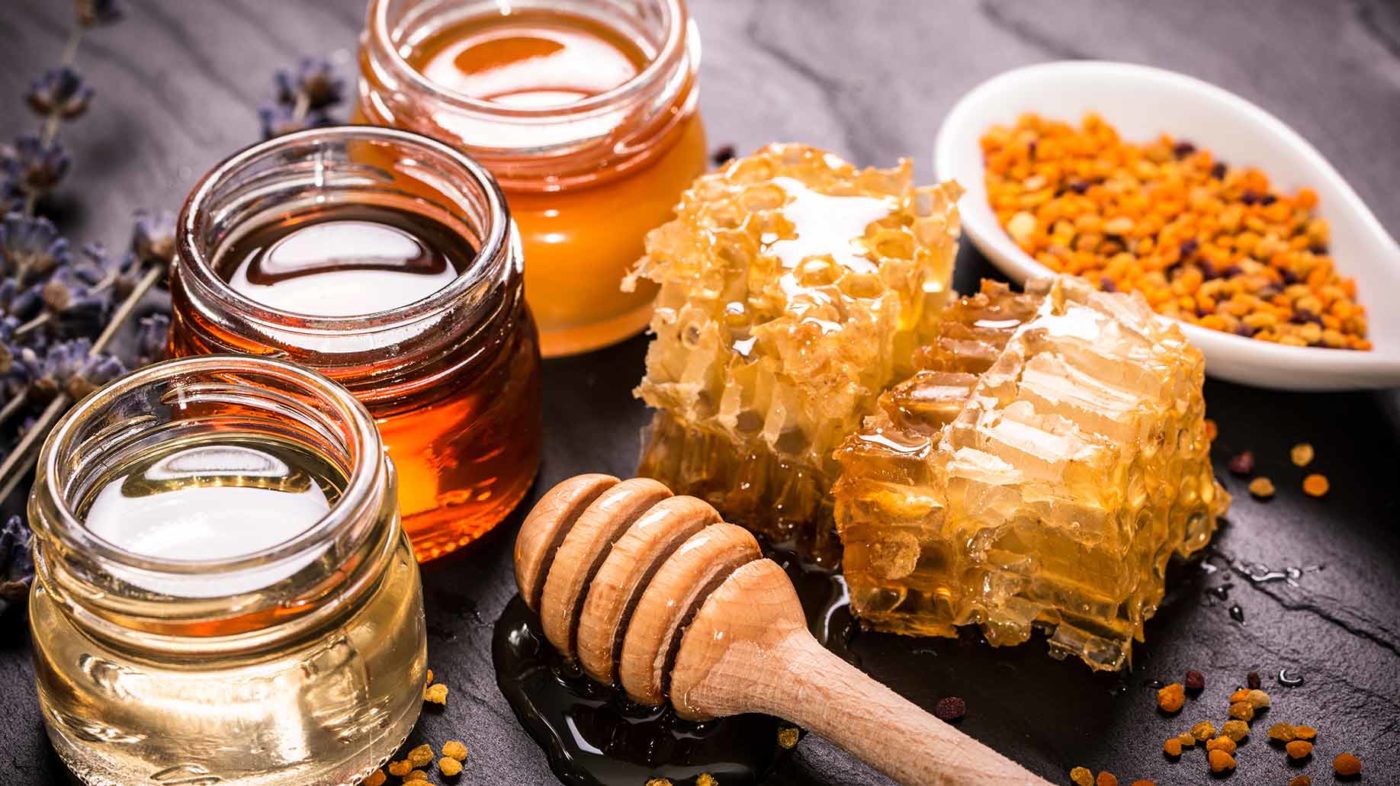Los productos de la colmena como la miel de abejas, propóleo, jalea real, veneno de abejas, polen y sus combinaciones han sido considerados alimentos desde los comienzos de la humanidad. En el mundo contemporáneo, además, se reconoce que tienen propiedades funcionales y farmacológicas en términos de lograr la prevención y tratamiento de enfermedades.

Cada uno de estos productos posee efectos diferentes sobre el cuerpo que son deseables en el cuidado de la salud. ¿Cómo funciona la apiterapia?: Una revisión a los mecanismos de acción a la luz de las investigaciones científicas.
Modulación del factor nuclear Kappa Beta. La activación del factor nuclear kappa beta ocurre en todos los procesos inflamatorios. Su activación crónica esta relacionada con múltiples enfermedades, desde las enfermedades autoinmunes hasta la enfermedad cardiovascular, es decir, la ausencia de su regulación conduce a alteraciones celulares propias de las enfermedades crónicas (1). Los productos de la colmena como el veneno de abejas, propóleo y jalea real modulan la activación del factor nuclear kappa Beta disminuyendo los efectos que se producen como consecuencia de la pérdida en su regulación (2–5).
Reducción del proceso inflamatorio. Los productos de la colmena inducen la disminución del proceso inflamatorio por regulación de la función de linfocitos y macrófagos, modulación de la actividad del sistema nervioso central y periférico y disminución de la liberación de las citoquinas proinflamatorias (6–8).
Incremento de la supervivencia celular. El veneno de abejas y jalea real incrementan la supervivencia celular mediante modulación de la vía de las caspasas, función mitocondrial y la prevención del daño del ADN (9–11).
Control del estrés oxidativo. La miel, polen y propóleos empleados en apiterapia poseen efecto secuestrante sobre los radicales libres mitigando así el daño celular y estructural inducido por el estrés oxidativo (12–16).
Inducción del metabolismo celular. La miel de abejas posee actividad regulatoria del metabolismo celular mediante la modulación de los receptores hormonales disponibles, particularmente del receptor para la insulina y el factor de crecimiento similar a la insulina (17).
Regulación del aporte de nutrientes en la célula. Tres efectos importantes de la miel y polen de abejas en este punto: regulación de la función mitocondrial, aporte directo de minerales, aminoácidos y vitaminas e incremento en la captación de los nutrientes disponibles en el microambiente celular (18,19).
Modulación de la liberación de factores de crecimiento. El veneno de abejas modula el efecto de los factores de crecimiento transformantes previniendo el reemplazo del tejido por fibra no funcional (20).
Disminución de la velocidad de envejecimiento celular. La jalea real previene la entrada en senescencia de distintos grupos celulares (21). El consumo regular de productos de la colmena como la miel, polen y propóleo reduce la velocidad con la cual se produce el acortamiento de los telómeros, indicador de envejecimiento celular (22).
Efecto prebiótico y regulación de la disbiosis. La miel de abejas y el polen apícola regulan la flora bacteriana y contribuyen a su normalización mediante un efecto prebiótico (23,24).
Control del daño endotelial y microvascular. El veneno de abejas, propóleo, miel y jalea real contribuyen al control del daño endotelial mediante la regulación de los niveles de glucemia y colesterol, control de la inflamación local en el endotelio y efecto secuestrante de los radicales libres (25–28).
Prevención de la fibrosis. El veneno de abejas reduce la formación de fibra no funcional en los tejidos crónicamente inflamados (20).
Regulación de la comunicación neuroinmunoendocrina. La jalea real y la miel de abejas contribuyen a la regulación de la función del sistema nervioso central mediante la modulación de la liberación de neurotransmisores y la liberación de hormonas (29,30). El veneno de abejas al modular la función de los linfocitos y macrófagos facilita la comunicación de estas células con otros tejidos (31,32).
Regulación del estado metabólico de la célula. La miel de abejas facilita la captación de glucosa en la célula e incrementa su sensibilidad a la insulina (17). El polen apícola aporta nutrientes como la vitamina B12, vitamina D, calcio y zinc necesarios para el funcionamiento celular (33).
Protección de la función mitocondrial. La mayoría de productos de la colmena, principalmente la miel de abejas y el propóleo, poseen gran capacidad antioxidante que mitiga el daño oxidativo de las mitocondrias (8,34,35). La miel colombiana tiene la mayor capacidades antioxidantes descritas en la literatura.
¿Efecto antineoplásico? En nuestra próxima entrega se revisarán los efectos de los productos de la colmena relevantes para el tratamiento del cáncer.
Referencias bibliográficas
1. Tornatore L, Thotakura AK, Bennett J, Moretti M, Franzoso G. The nuclear factor kappa B signaling pathway: integrating metabolism with inflammation. Trends Cell Biol [Internet]. 2012 Nov;22(11):557–66. Available from: http://linkinghub.elsevier.com/retrieve/pii/S0962892412001407
2. Shin S, Ye M, Choi S, Park K. Anti-inflammatory effect of bee venom in an allergic chronic rhinosinusitis mouse model. Mol Med Rep [Internet]. 2018 Mar 9; Available from: http://www.spandidos-publications.com/10.3892/mmr.2018.8720
3. Choi K, Hwang C, Gu S, Park M, Kim J, Park J, et al. Cancer Cell Growth Inhibitory Effect of Bee Venom via Increase of Death Receptor 3 Expression and Inactivation of NF-kappa B in NSCLC Cells. Toxins (Basel) [Internet]. 2014 Jul 25;6(8):2210–28. Available from: http://www.mdpi.com/2072-6651/6/8/2210
4. Yang X-Y, Yang D, Wei-Zhang, Wang J-M, Li C-Y, Hui-Ye, et al. 10-Hydroxy-2-decenoic acid from Royal jelly: a potential medicine for RA. J Ethnopharmacol [Internet]. 2010 Mar 24;128(2):314–21. Available from: http://www.ncbi.nlm.nih.gov/pubmed/20138211
5. Nie J, Chang Y, Li Y, Zhou Y, Qin J, Sun Z, et al. Caffeic Acid Phenethyl Ester (Propolis Extract) Ameliorates Insulin Resistance by Inhibiting JNK and NF-κB Inflammatory Pathways in Diabetic Mice and HepG2 Cell Models. J Agric Food Chem [Internet]. 2017 Oct 18;65(41):9041–53. Available from: https://pubs.acs.org/doi/10.1021/acs.jafc.7b02880
6. KIM J-Y, LEE W-R, KIM K-H, AN H-J, CHANG Y-C, HAN S-M, et al. Effects of bee venom against Propionibacterium acnes-induced inflammation in human keratinocytes and monocytes. Int J Mol Med [Internet]. 2015 Jun;35(6):1651–6. Available from: https://www.spandidos-publications.com/10.3892/ijmm.2015.2180
7. Ali M. Studies on Bee Venom and Its Medical Uses. Int J Adv Res …. 2012;1:1–15.
8. Pasupuleti VR, Sammugam L, Ramesh N, Gan SH. Honey, Propolis, and Royal Jelly: A Comprehensive Review of Their Biological Actions and Health Benefits. Oxid Med Cell Longev [Internet]. 2017;2017:1259510. Available from: http://www.ncbi.nlm.nih.gov/pubmed/28814983
9. Takahashi Y, Hijikata K, Seike K, Nakano S, Banjo M, Sato Y, et al. Effects of Royal Jelly Administration on Endurance Training-Induced Mitochondrial Adaptations in Skeletal Muscle. Nutrients [Internet]. 2018 Nov 12;10(11):1735. Available from: http://www.mdpi.com/2072-6643/10/11/1735
10. Jung S, Lee K-W, Choi S-M, Yang E. Bee Venom Protects against Rotenone-Induced Cell Death in NSC34 Motor Neuron Cells. Toxins (Basel) [Internet]. 2015 Sep 21;7(9):3715–26. Available from: http://www.mdpi.com/2072-6651/7/9/3715
11. Almeer RS, AlBasher GI, Alarifi S, Alkahtani S, Ali D, Abdel Moneim AE. Royal jelly attenuates cadmium-induced nephrotoxicity in male mice. Sci Rep [Internet]. 2019 Dec 9;9(1):5825. Available from: http://www.nature.com/articles/s41598-019-42368-7
12. Khalil MI, Tanvir EM, Afroz R, Sulaiman SA, Gan SH. Cardioprotective Effects of Tualang Honey: Amelioration of Cholesterol and Cardiac Enzymes Levels. Biomed Res Int [Internet]. 2015;2015:1–8. Available from: http://www.hindawi.com/journals/bmri/2015/286051/
13. Prior RL, Cao G. In vivo total antioxidant capacity: comparison of different analytical methods. Free Radic Biol Med [Internet]. 1999 Dec;27(11–12):1173–81. Available from: http://www.ncbi.nlm.nih.gov/pubmed/10641708
14. Bankova V, Galabov AS, Antonova D, Vilhelmova N, Di Perri B. Chemical composition of Propolis Extract ACF® and activity against herpes simplex virus. Phytomedicine [Internet]. 2014 Sep;21(11):1432–8. Available from: http://linkinghub.elsevier.com/retrieve/pii/S0944711314002104
15. Fratellone PM, Tsimis F, Fratellone G. Apitherapy Products for Medicinal Use. J Altern Complement Med. 2016;5(6):6–7.
16. Campos MGR, Bogdanov S, de Almeida-Muradian LB, Szczesna T, Mancebo Y, Frigerio C, et al. Pollen composition and standardisation of analytical methods. Vol. 47, Journal of Apicultural Research. 2008. p. 154–61.
17. Lori G, Cecchi L, Mulinacci N, Melani F, Caselli A, Cirri P, et al. Honey extracts inhibit PTP1B, upregulate insulin receptor expression, and enhance glucose uptake in human HepG2 cells. Biomed Pharmacother [Internet]. 2019 May;113:108752. Available from: https://linkinghub.elsevier.com/retrieve/pii/S0753332218346948
18. Ricigliano VA, Fitz W, Copeland DC, Mott BM, Maes P, Floyd AS, et al. The impact of pollen consumption on honey bee ( Apis mellifera ) digestive physiology and carbohydrate metabolism. Arch Insect Biochem Physiol [Internet]. 2017 Oct;96(2):e21406. Available from: http://doi.wiley.com/10.1002/arch.21406
19. Afrin S, Gasparrini M, Forbes-Hernández TY, Cianciosi D, Reboredo-Rodriguez P, Manna PP, et al. Protective effects of Manuka honey on LPS-treated RAW 264.7 macrophages. Part 1: Enhancement of cellular viability, regulation of cellular apoptosis and improvement of mitochondrial functionality. Food Chem Toxicol [Internet]. 2018 Nov;121:203–13. Available from: https://linkinghub.elsevier.com/retrieve/pii/S0278691518306379
20. Lee W-R, Pak S, Park K-K. The Protective Effect of Bee Venom on Fibrosis Causing Inflammatory Diseases. Toxins (Basel) [Internet]. 2015 Nov 16;7(12):4758–72. Available from: http://www.mdpi.com/2072-6651/7/11/4758
21. Jiang C, Liu X, Li C, Qian H, Chen D, Lai C, et al. Anti-senescence effect and molecular mechanism of the major royal jelly proteins on human embryonic lung fibroblast (HFL-I) cell line. J Zhejiang Univ B [Internet]. 2018 Dec 17;19(12):960–72. Available from: http://link.springer.com/10.1631/jzus.B1800257
22. Nasir NFM, Kannan TP, Sulaiman SA, Shamsuddin S, Azlina A, Stangaciu S. The relationship between telomere length and beekeeping among Malaysians. Age (Omaha). 2015;37(3).
23. Miguel M, Antunes M, Faleiro M. Honey as a Complementary Medicine. Integr Med Insights [Internet]. 2017 Jan 24;12:117863371770286. Available from: http://journals.sagepub.com/doi/10.1177/1178633717702869
24. Denisow B, Denisow-Pietrzyk M. Biological and therapeutic properties of bee pollen: a review. J Sci Food Agric [Internet]. 2016 Oct;96(13):4303–9. Available from: http://doi.wiley.com/10.1002/jsfa.7729
25. Shkenderov S, Koburova K. Adolapin–a newly isolated analgetic and anti-inflammatory polypeptide from bee venom. Toxicon [Internet]. 1982;20(1):317–21. Available from: http://www.ncbi.nlm.nih.gov/pubmed/7080045
26. Bueno-Silva B, Franchin M, Alves C de F, Denny C, Colón DF, Cunha TM, et al. Main pathways of action of Brazilian red propolis on the modulation of neutrophils migration in the inflammatory process. Phytomedicine [Internet]. 2016 Dec 1;23(13):1583–90. Available from: http://www.ncbi.nlm.nih.gov/pubmed/27823622
27. Alagwu EA, Okwara JE, Nneli RO, Osim EE. Effect of honey intake on serum cholesterol, triglycerides and lipoprotein levels in albino rats and potential benefits on risks of coronary heart disease. Niger J Physiol Sci [Internet]. 2011 Dec 20;26(2):161–5. Available from: http://www.ncbi.nlm.nih.gov/pubmed/22547185
28. Watadani R, Kotoh J, Sasaki D, Someya A, Matsumoto K, Maeda A. 10-Hydroxy-2-decenoic acid, a natural product, improves hyperglycemia and insulin resistance in obese/diabetic KK-Ay mice, but does not prevent obesity. J Vet Med Sci [Internet]. 2017 Sep 29;79(9):1596–602. Available from: http://www.ncbi.nlm.nih.gov/pubmed/28740028
29. Ghanbari E, Khazaei MR, Khazaei M, Nejati V. Royal Jelly Promotes Ovarian Follicles Growth and Increases Steroid Hormones in Immature Rats. Int J Fertil Steril [Internet]. 2018 Jan;11(4):263–9. Available from: http://www.ncbi.nlm.nih.gov/pubmed/29043701
30. Viuda-Martos M, Ruiz-Navajas Y, Fernández-López J, Pérez-Álvarez JA. Functional Properties of Honey, Propolis, and Royal Jelly. J Food Sci [Internet]. 2008 Nov;73(9):R117–24. Available from: http://doi.wiley.com/10.1111/j.1750-3841.2008.00966.x
31. Han SM, Park KK, Nicholls YM, Macfarlane N, Duncan G. Effects of honeybee (Apis mellifera) venom on keratinocyte migration in vitro. Pharmacogn Mag [Internet]. 2013 Jul;9(35):220–6. Available from: http://www.ncbi.nlm.nih.gov/pubmed/23930005
32. Lee JH, Kwon YB, Han HJ, Mar WC, Lee HJ, Yang IS, et al. Bee venom pretreatment has both an antinociceptive and anti-inflammatory effect on carrageenan-induced inflammation. J Vet Med Sci [Internet]. 2001 Mar;63(3):251–9. Available from: http://www.ncbi.nlm.nih.gov/pubmed/11307924
33. Bogdanov S. Pollen : Production , Nutrition and Health : A Review. Bee Prod Sci [Internet]. 2014;(February):1–35. Available from: www.bee-hexagon.net
34. Sahin H. Honey as an apitherapic product: its inhibitory effect on urease and xanthine oxidase. J Enzyme Inhib Med Chem [Internet]. 2015 May 5;1–5. Available from: http://www.tandfonline.com/doi/full/10.3109/14756366.2015.1039532
35. Daugsch A, Moraes CS, Fort P, Park YK. Brazilian red propolis – Chemical composition and botanical origin. Evidence-based Complement Altern Med. 2008;5(4):435–41.
